One of the lovely things about travelling to Mongolia is staying in gers, either with families who were kind enough to share their homes with us or at specially designed tourist camps. A ger (also known in Western countries as a Mongolian yurt, although ger is the correct Mongolian term) are traditional round tents used as dwellings throughout Mongolia. The amazing thing about them is that they can be taken down and put up within a couple of hours. The construction uses no nails or fixings – the wooden poles interlock and remain sturdy and solid.
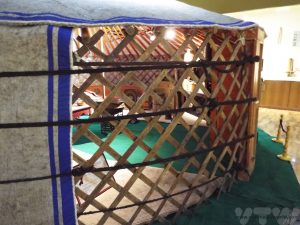
The national museum of Mongolia in Ulaanbaatar helpfully has a model to show a ger’s construction.
The door of the ger always faces south. You have to remember to duck when entering – it’s probably a rare visitor who doesn’t bash their head at least once when staying in gers!
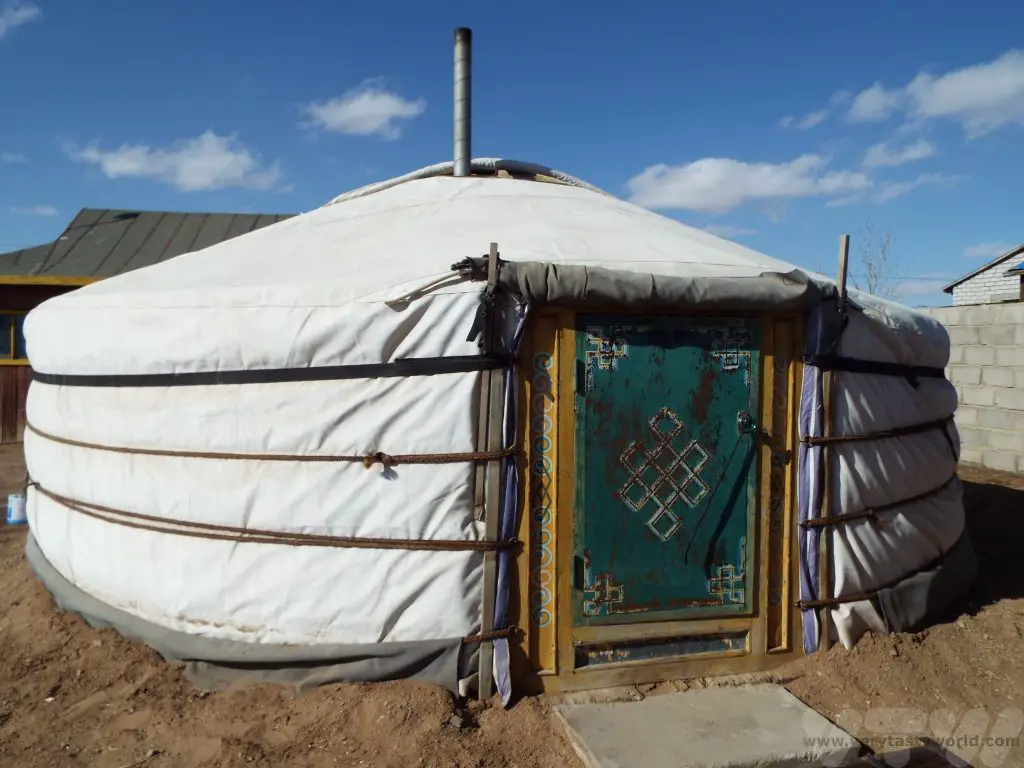
Most locals don’t knock before entering the ger and shoes remain on. Whenever we visited a family we were invited to join them and were introduced to all the family members over a cup of milk tea or sometimes a shot of vodka. We were always welcomed warmly with big smiles at every place we visited.
In winter, temperatures outside can drop to -30 degC. We visited in spring so night-time temperatures were a relatively balmy -15 degC – which was still very, very cold! The fuel used by the family varies depending on what is available – coal burns more slowly than wood which burns more slowly than dung.
The Heart Of The Home
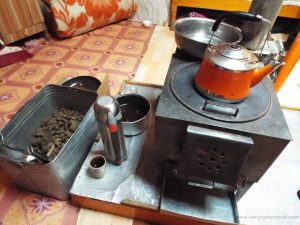
The centre of the ger is the stove. It really is the heart of the home, used for both cooking and heating. You need to be aware of the chimney as it’s located in the centre of the ger and will get very hot.
To the left of the door is the kitchen area. Shelves contain pots and pans as well as cooking utensils. Many of the pots are specifically designed to be used directly on the stove and can be used interchangeably. It’s a very efficient system.
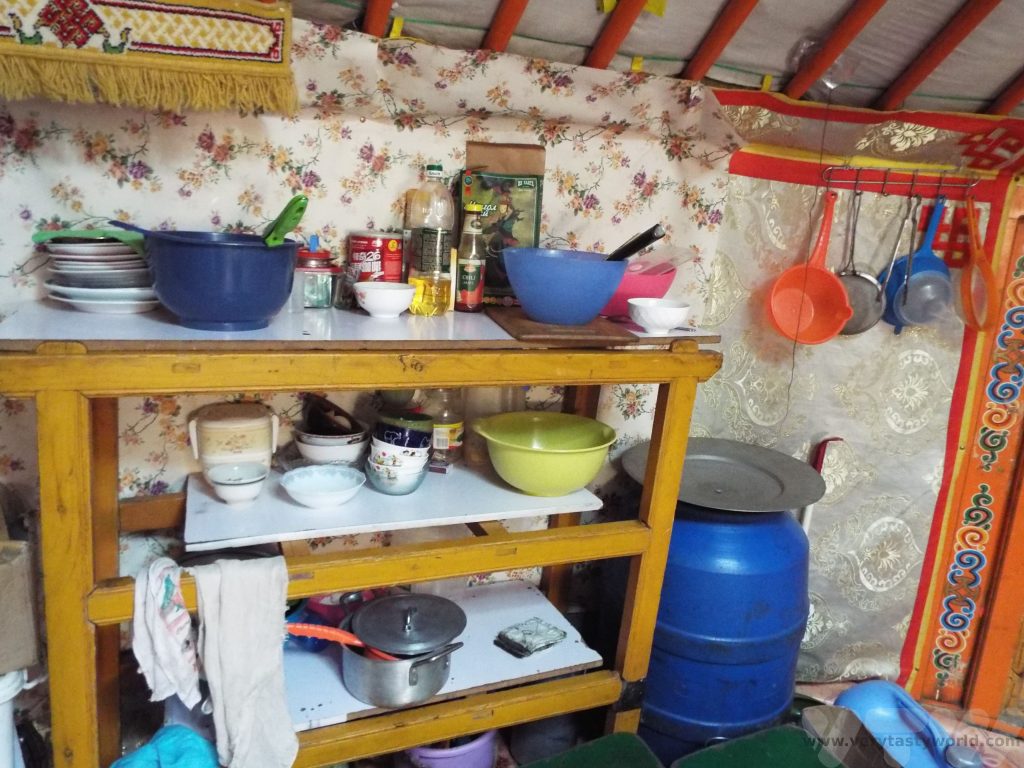
The blue barrel contains water, drawn from the nearest well.
To the right of the door is the washing area. There is no running water available but the little plastic vessel can be filled from the main water barrel and the tap opened.
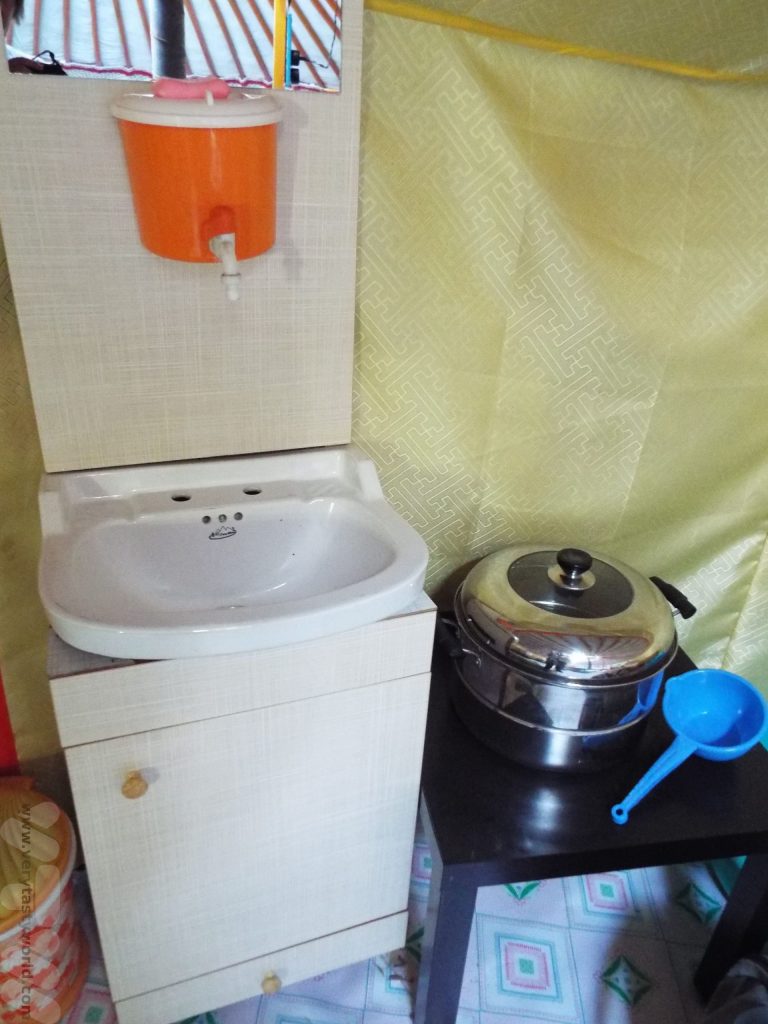
Be careful not to waste water though. If you want water in the Gobi desert you have to go to the nearest well, which can be several kilometres away.
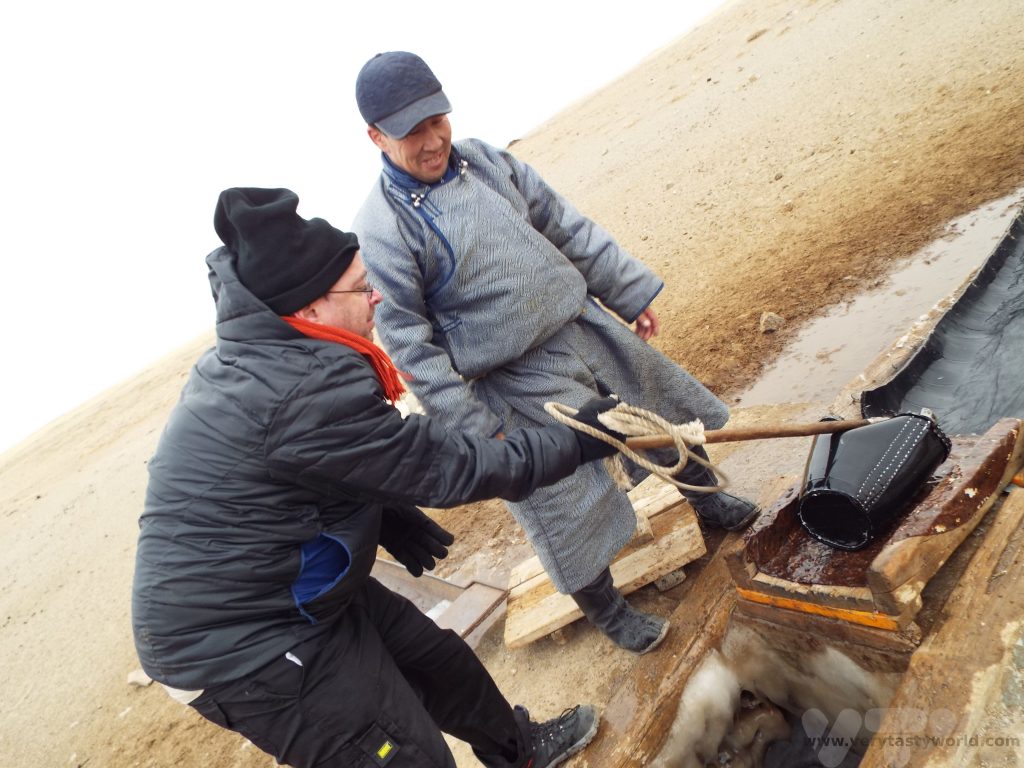
The water is pure and can be drunk directly with no filtration needed. It tastes good.
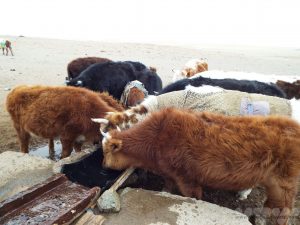
This well was used not only to provide water for the family, the local cows were also waiting for a drink.
Sleeping In A Mongolian Yurt – A Ger
Beds and storage areas line the circumference of the ger. There will be a low table with stools next to the stove. Beds double as a seating area – it’s perfectly fine to sit on someone’s bed. Blankets and clothes can be stored underneath. You can hang your coat or dry any laundry by hanging clothes in the rafters. Family homes also had furniture such as chests of drawers and dressing tables.
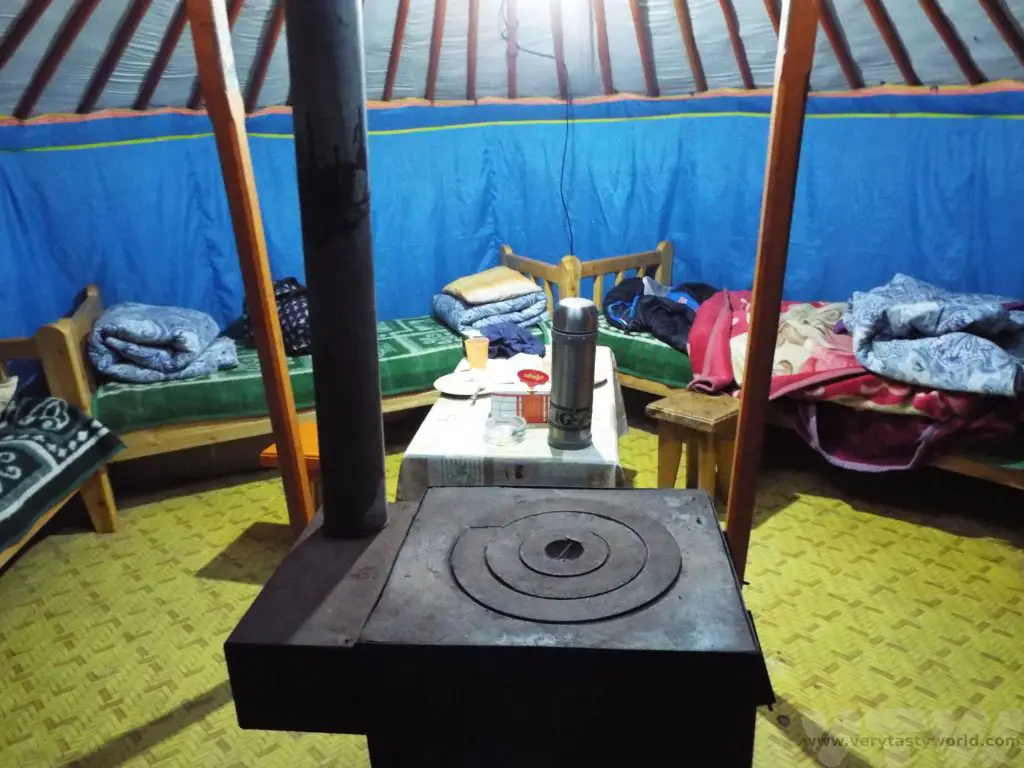
Of course there is a need for a toilet. The facilities are usually a basic long drop loo, that is, a hole in the ground with a couple of planks across it to stand on, located some 50m from the ger. When answering the call of nature you are surrounded by, well, nature.
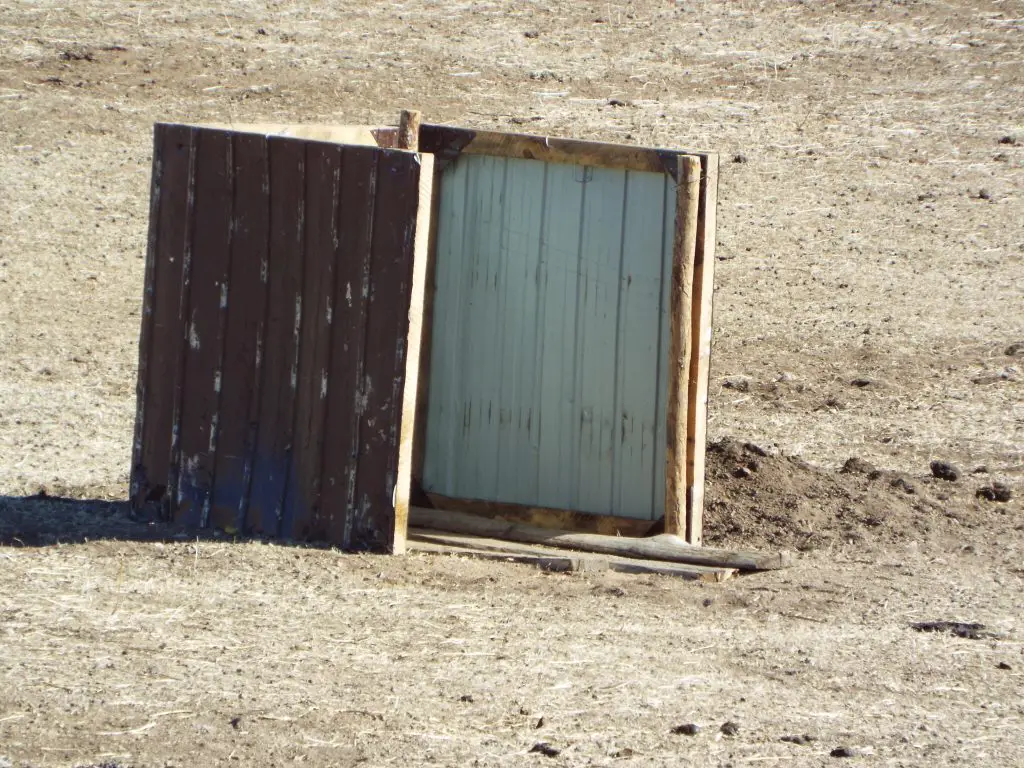
If you want a shower you will have to go to the local town. There are shower houses available for locals to use. We had just three showers in eleven days and were surprised to discover that it’s quite liberating having greasy hair and simply not feeling the need to shower every day. We’d have a quick wash down with wet-wipes on non-shower days (making sure to dispose of them properly). The climate in Mongolia, especially in the Gobi, is very dry – so the heat of the summer and cold of the winter are mitigated by the lack of humidity.
In springtime, while daytime temperatures can be quite mild, it drops significantly at night. The ger will be toasty warm while the stove is lit, but it will go out and then it’s time to bundle up – thermals, blankets, sleeping bags – just pile them on.
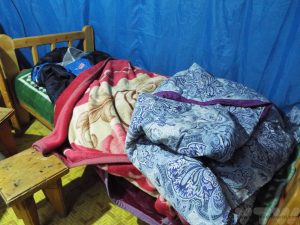
The host family will come in in the morning and start up the fire. We were pretty incompetent at getting the stove going at first but during the course our stay we eventually developed a technique that could both start and maintain the fire and we could officially deem ourselves the ‘fire-starters.’ Nomadic families make use of the dung produced by their many animals. It is dried out and used for fuel. It burns quite quickly so you need to keep an eye on the stove and top up whenever necessary.
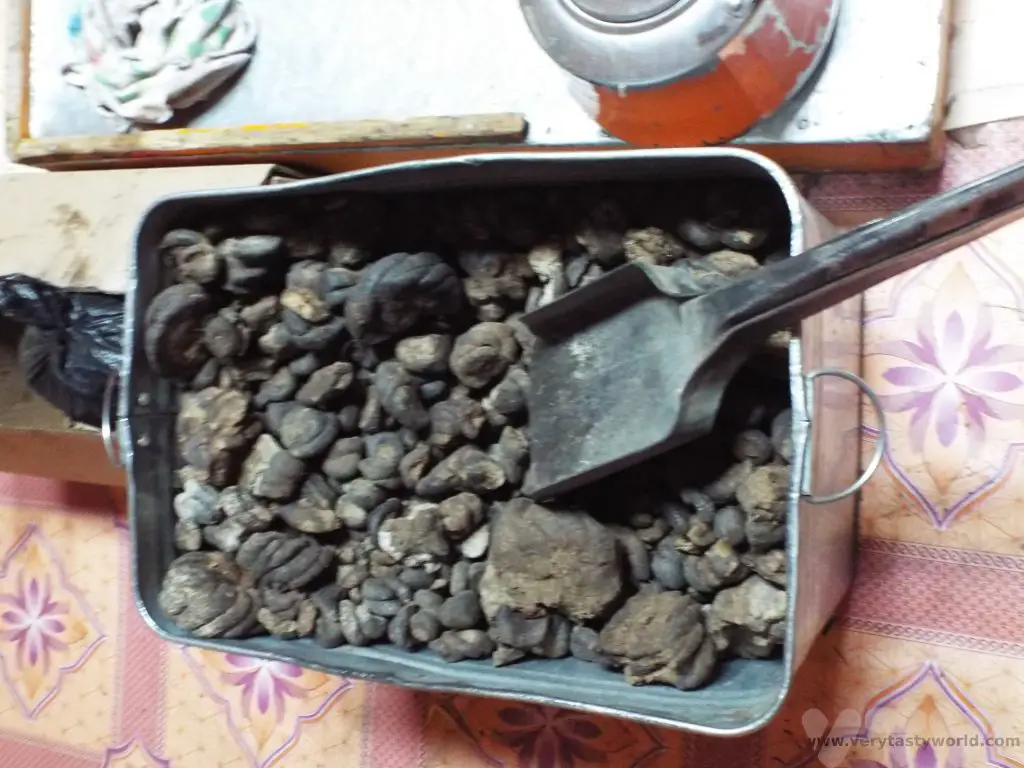
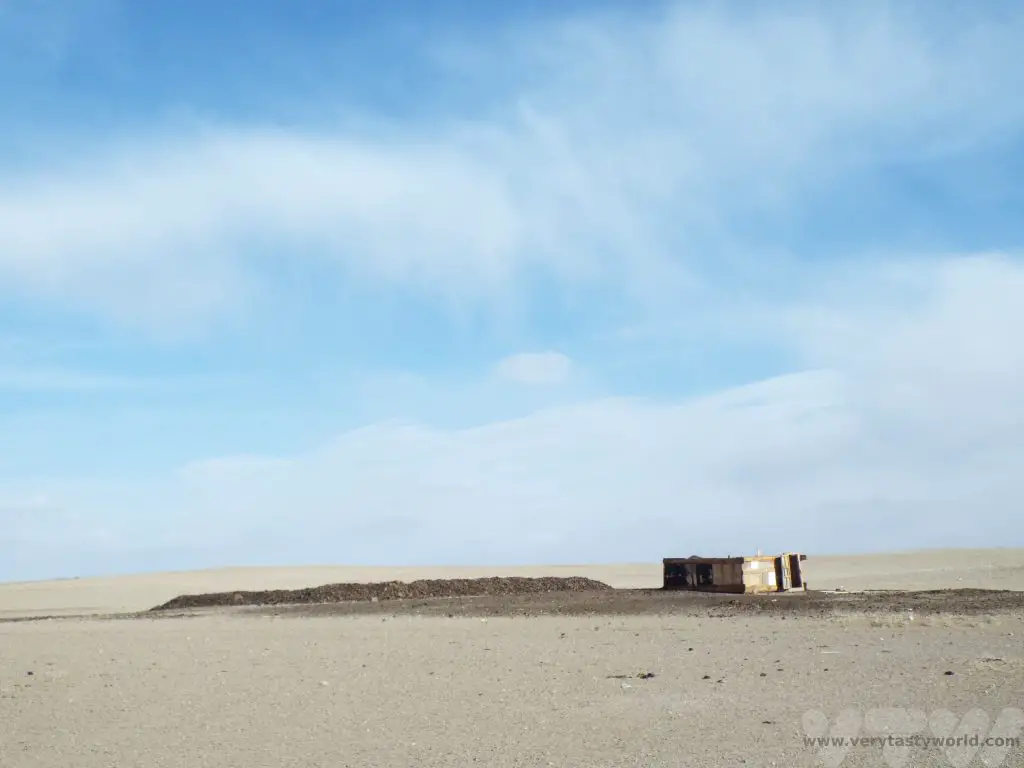
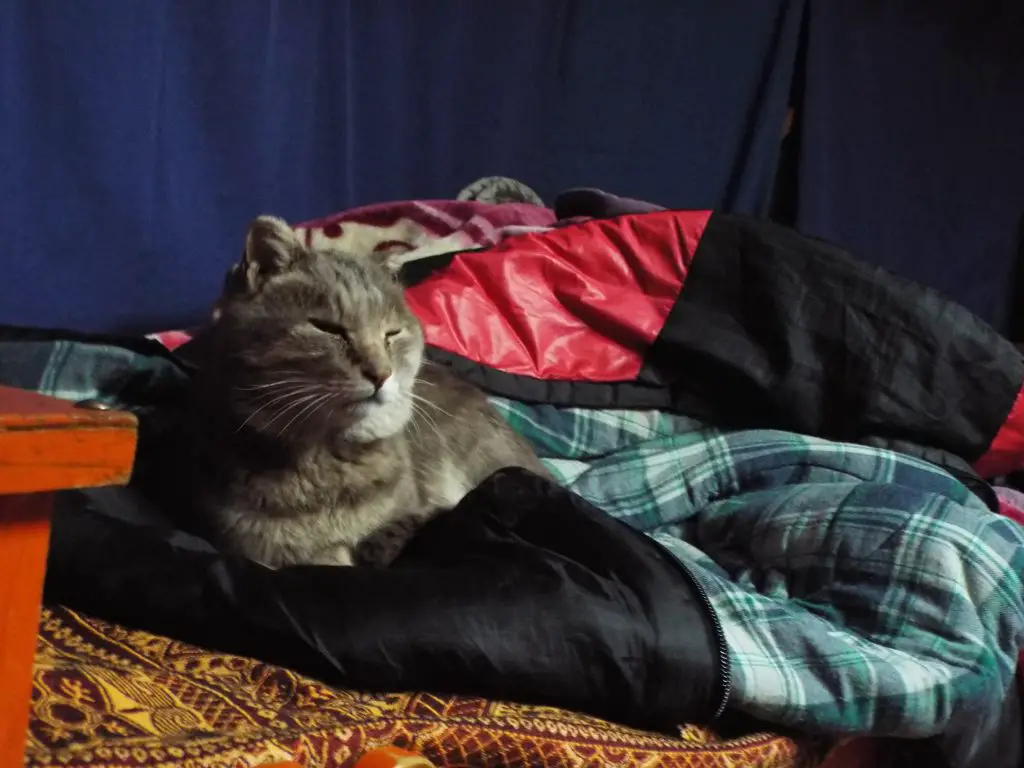
Cats are working animals in Mongolia and all our hosts found it hilarious that our little cat goes into a cattery – we described it as a ‘cat hotel’ – when we are travelling. If a local cat gets into the ger be warned, it will instantly take advantage of both the warmth and softy tourists within and will almost certainly leap onto your sleeping gear to snuggle up and look smug. You’ll be lucky to get your bed back.
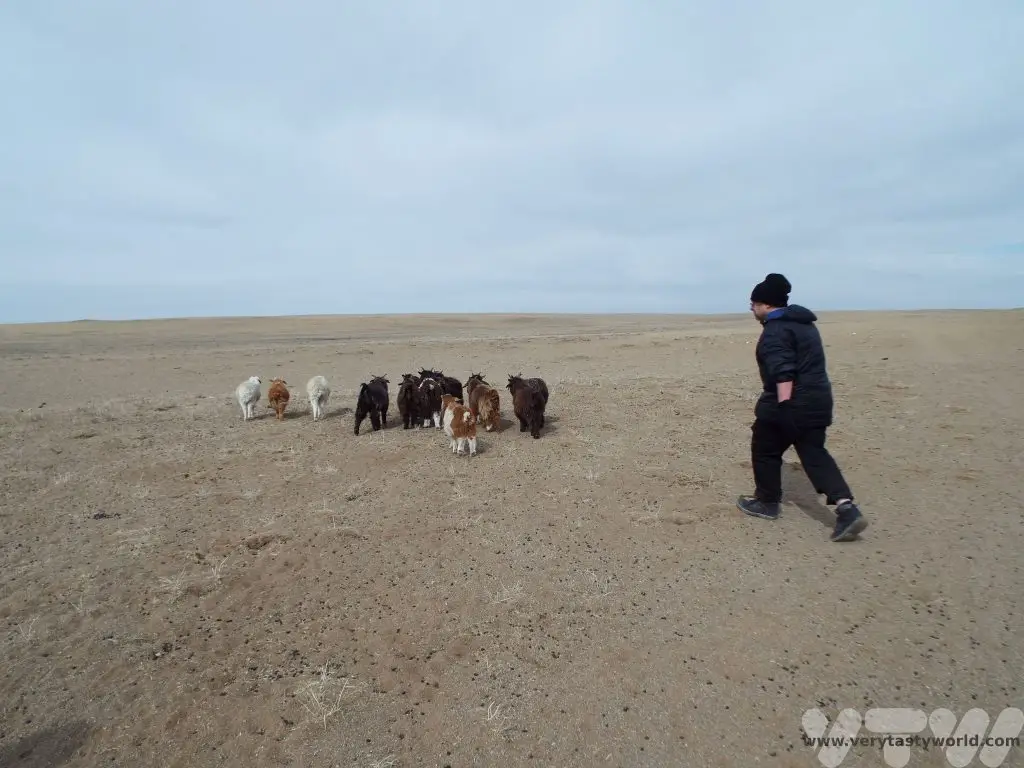
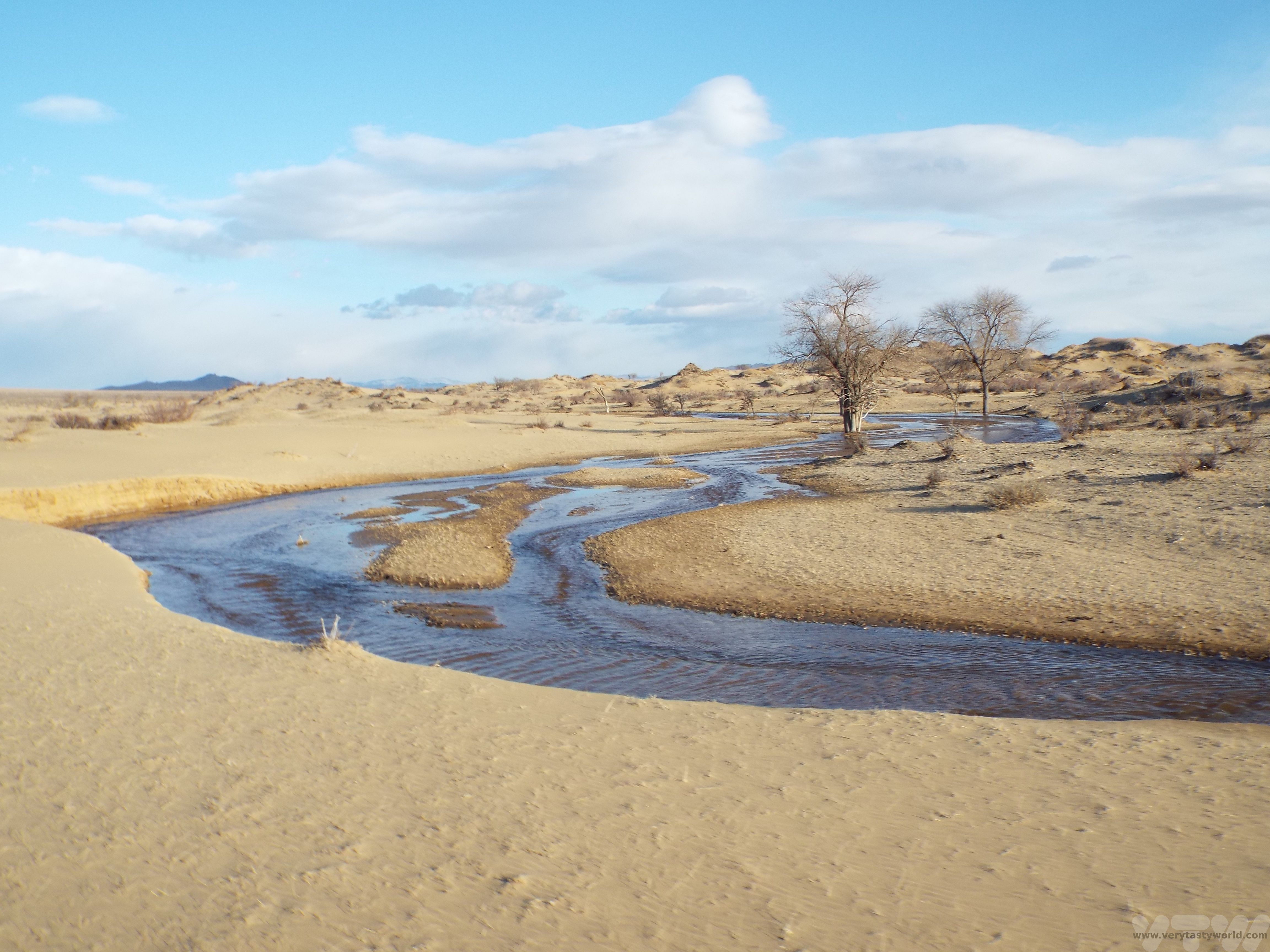
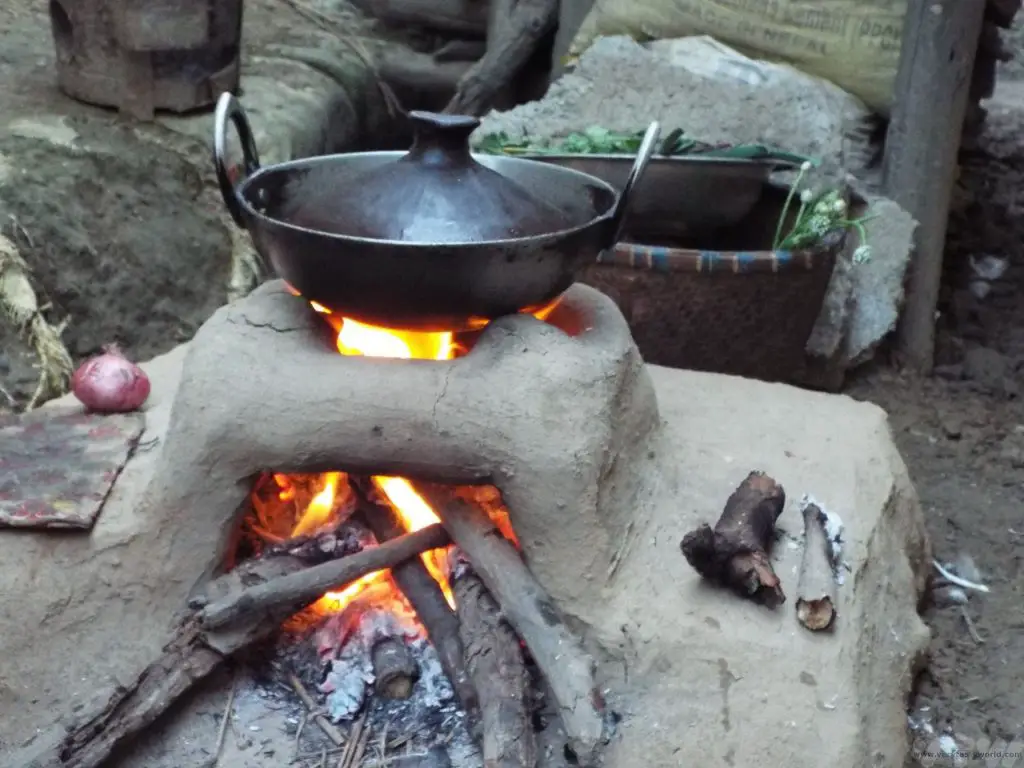
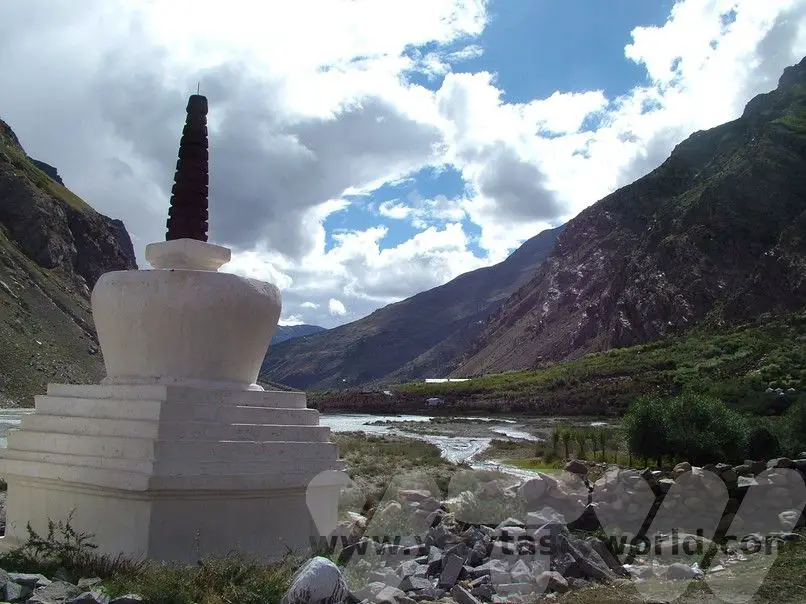


[…] We were visiting Nergui and family who live in the Erdenedalai area, in the middle Gobi. They kept cows, sheep and goats. The wooden pens for the animals are a permanent feature and the family move between different grazing locations several times a year. The gers are constructed alongside the animal pens. They can be taken down and put up in just a few hours – a really clever design. […]
[…] a resource water is. You don’t waste it. Whether we were staying with families who had kindly shared their homes with us or in ger camps, water was always available, but it was finite, stored in a barrel in the […]
[…] We were visiting Nergui and family who live in the Erdenedalai area, in the middle Gobi. They kept cows, sheep and goats. The wooden pens for the animals are a permanent feature and the family move between different grazing locations several times a year. The gers are constructed alongside the animal pens. They can be taken down and put up in just a few hours – a really clever design. […]
What an absolutely unique experience! You guys are so adventurous!
Thank you. It took a while to get used to, but it was a real privilege to spend time with local families and to understand their way of life.
It’s fascinating to think how little you really need to get by and these gers show it. It would be really interesting to see them put one up; it looks like it would take longer than a couple hours if I had to do it! Why do the doors always face south? Is that direction not facing the wind?
That’s a great question. The doors facing south is practical. It allows for the light and warmth from the sun to come in and also protects from the chilly prevailing wind. We would have loved to see a ger being dismantled and reconstructed. I reckon if it was me and Colin doing it, we’d start arguing!!
I’ve always wanted to do this. It feels that a trip to the wilds of Mongolia has to include this as its such a unique feature of the life and culture of the country. It would certainly take some time for me to get used to the basic facilities, as I love my home comforts but would see it as a challenge and adventure in which to survive and learn. This gives me a useful guide as to what to expect.
It is a bit of a challenge at first but we were surprised at how easily we adapted to this very different way of life. We slept in gers for all but 2 days of our trip to Mongolia – we were only in hotels in Ulaanbaatar and Tsetserleg. What was absolutely lovely was how much we were welcomed and how wonderfully friendly our hosts were. It really was one of the most amazing trips we have undertaken.
You guys definitely inspire us with all your amazing adventures. Great post.